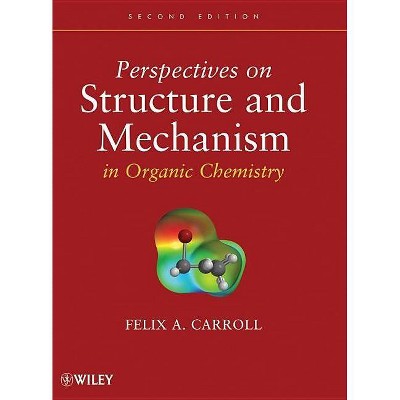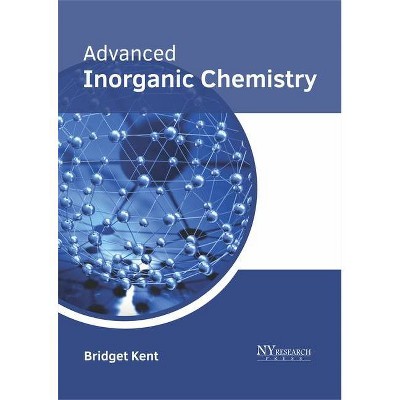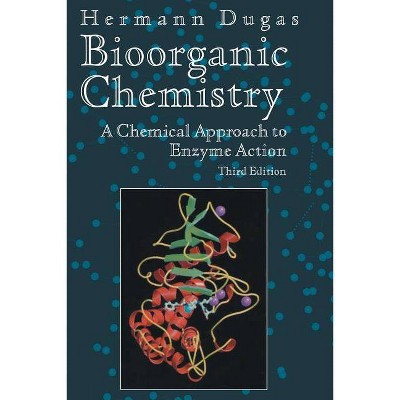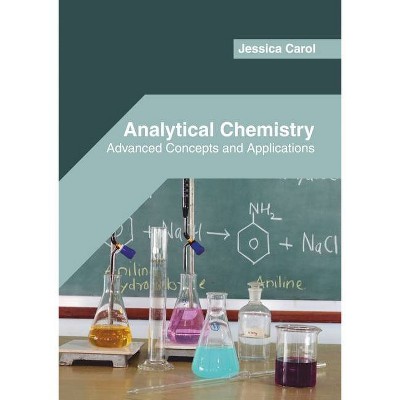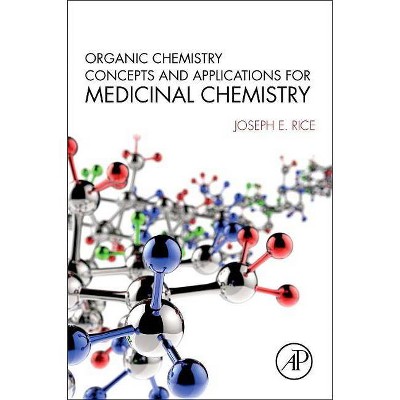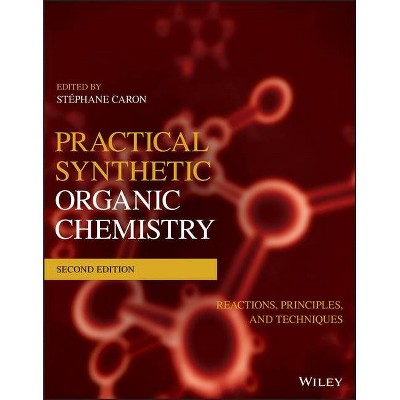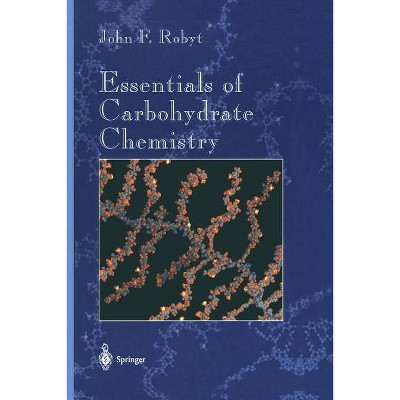Advanced Organic Chemistry Part A - (Advanced Organic Chemistry / Part A: Structure and Mechanism) 5th Edition (Hardcover)
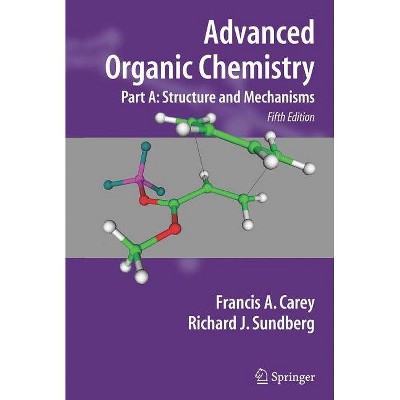
Similar Products
Products of same category from the store
AllProduct info
<p/><br></br><p><b> About the Book </b></p></br></br><p>This two-part, fifth edition has been updated to reflect advances in the field since the previous edition, especially in computational chemistry. Part A covers the basis of fundamental structural topics and basic mechanistic types.</p><p/><br></br><p><b> Book Synopsis </b></p></br></br><p>Since its original appearance in 1977, Advanced Organic Chemistry has maintained its place as the premier textbook in the field, offering broad coverage of the structure, reactivity and synthesis of organic compounds. As in the earlier editions, the text contains extensive references to both the primary and review literature and provides examples of data and reactions that illustrate and document the generalizations. While the text assumes completion of an introductory course in organic chemistry, it reviews the fundamental concepts for each topic that is discussed. </p> <p>The two-part fifth edition has been substantially revised and reorganized for greater clarity. Among the changes: Updated material reflecting advances in the field since 2001's Fourth Edition, especially in computational chemistry; A companion Web site provides digital models for study of structure, reaction and selectivity; Solutions to the exercises provided to instructors online.</p> <p>The material in Part A is organized on the basis of fundamental structural topics such as structure, stereochemistry, conformation and aromaticity and basic mechanistic types, including nucleophilic substitution, addition reactions, carbonyl chemistry, aromatic substitution and free radical reactions. Together with Part B: Reaction and Synthesis, the two volumes are intended to provide the advanced undergraduate or beginning graduate student in chemistry with a sufficient foundation to comprehend and use the research literature in organic chemistry.</p><p/><br></br><p><b> From the Back Cover </b></p></br></br><p>Since its original appearance in 1977, Advanced Organic Chemistry has maintained its place as the premier textbook in the field, offering broad coverage of the structure, reactivity and synthesis of organic compounds. As in the earlier editions, the text contains extensive references to both the primary and review literature and provides examples of data and reactions that illustrate and document the generalizations. While the text assumes completion of an introductory course in organic chemistry, it reviews the fundamental concepts for each topic that is discussed.</p> <p>The two-part fifth edition has been substantially revised and reorganized for greater clarity. Part A begins with the fundamental concepts of structure and stereochemistry, and the thermodynamic and kinetic aspects of reactivity. Major reaction types covered include nucleophilic substitution, addition reactions, carbanion and carbonyl chemistry, aromatic substitution, pericyclic reactions, radical reactions, and photochemistry.</p> <p>Among the changes: </p> <ul> <p> </p><li>Coverage of the importance of computational chemistry in modern organic chemistry, including applications to many specific reactions.</li> <p></p> <p> </p><li>Expanded coverage of stereoselectivity and enantioselectivity, including discussion of several examples of enantioselective reagents and catalysts</li> <p></p> <p> </p><li>Chapter 10, Concerted Pericyclic Reactions, has been reorganized and now begins with cycloaddition reactions. </li> <p></p> <p> </p><li>The treatment of photochemical reactions has been extensively updated to reflect both experimental and computational studies of the transient intermediates involved in photochemical reactions.</li> <p></p> <p> </p><li>A companion Web site provides digital models for study of structure, reaction and selectivity. Here students can view and manipulate computational models of reaction paths. These sites also provide exercises based on detailed study of the computational models. </li> <p> </p><p> </p><li>Several chapters in Part A conclude with Topics - short excursions into specific topics such as more detailed analysis of polar substituent effects, efforts to formulate substituent effects in terms of density functional theory, or the role of carbocations in petroleum refining</li> <p></p> <p> </p><li>Solutions to the chapter problems are provided to instructors online </li> <p></p></ul> <p>Advanced Organic Chemistry Part A provides a close look at the structural concepts and mechanistic patterns that are fundamental to organic chemistry. It relates those mechanistic patterns, including relative reactivity and stereochemistry, to underlying structural factors. Understanding these concepts and relationships will allow students to recognize the cohesive patterns of reactivity in organic chemistry. Part A: Structure and Mechanism and Part B: Reaction and Synthesis - taken together - are intended to provide the advanced undergraduate or beginning graduate student in chemistry with a foundation to comprehend and use the research literature in organic chemistry</p><p/><br></br><p><b> Review Quotes </b></p></br></br><br><p>From the reviews of the fifth edition: </p>"Carey and Sundberg had written the most detailed and briliant account in the subject of organic chemistry. ... The book provides an abundance of reaction examples organized in schemes. It makes studying very effective and helpful. ... Advanced undergraduates and graduate students will welcome this new edition and the depth of materials covered." (Philosophy, Religion and Science Book Reviews, bookinspections.wordpress.com, May, 2014)<br><p/><br></br><p><b> About the Author </b></p></br></br><p>Francis A. Carey is a native of Pennsylvania, educated in the public schools of Philadelphia, at Drexel University (B.S. in chemistry, 1959), and at Penn State (Ph.D. 1963). Following postdoctoral work at Harvard and military service, he was appointed to the chemistry faculty of the University of Virginia in 1966. Prior to retiring in 2000, he regularly taught the two-semester lecture courses in general chemistry and organic chemistry. With his students, Professor Carey has published over forty research papers in synthetic and mechanistic organic chemistry.</p> <p> Professor Sundberg is primarily engaged in teaching and chemical education. Along with Francis A. Carey he is the author of "Advanced Organic Chemistry. Professor Sundberg is also interested in synthetic methodology in heterocyclic chemistry and is the author of "Indoles" in the Best Synthetic Methods Series (Academic Press, 1996).</p>
Price History
Cheapest price in the interval: 134.99 on November 8, 2021
Most expensive price in the interval: 135.99 on October 27, 2021
Price Archive shows prices from various stores, lets you see history and find the cheapest. There is no actual sale on the website. For all support, inquiry and suggestion messages communication@pricearchive.us
